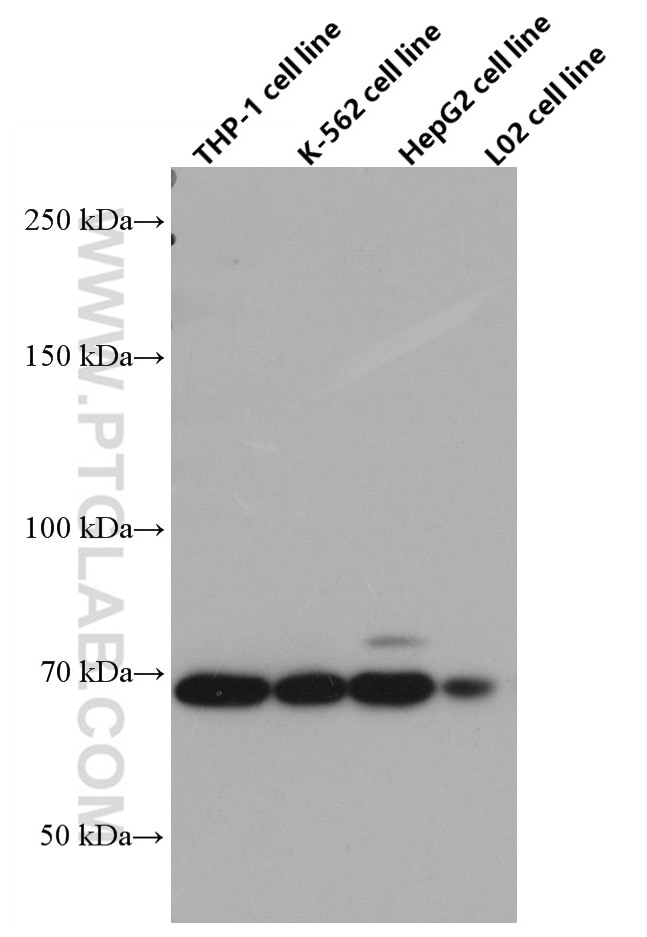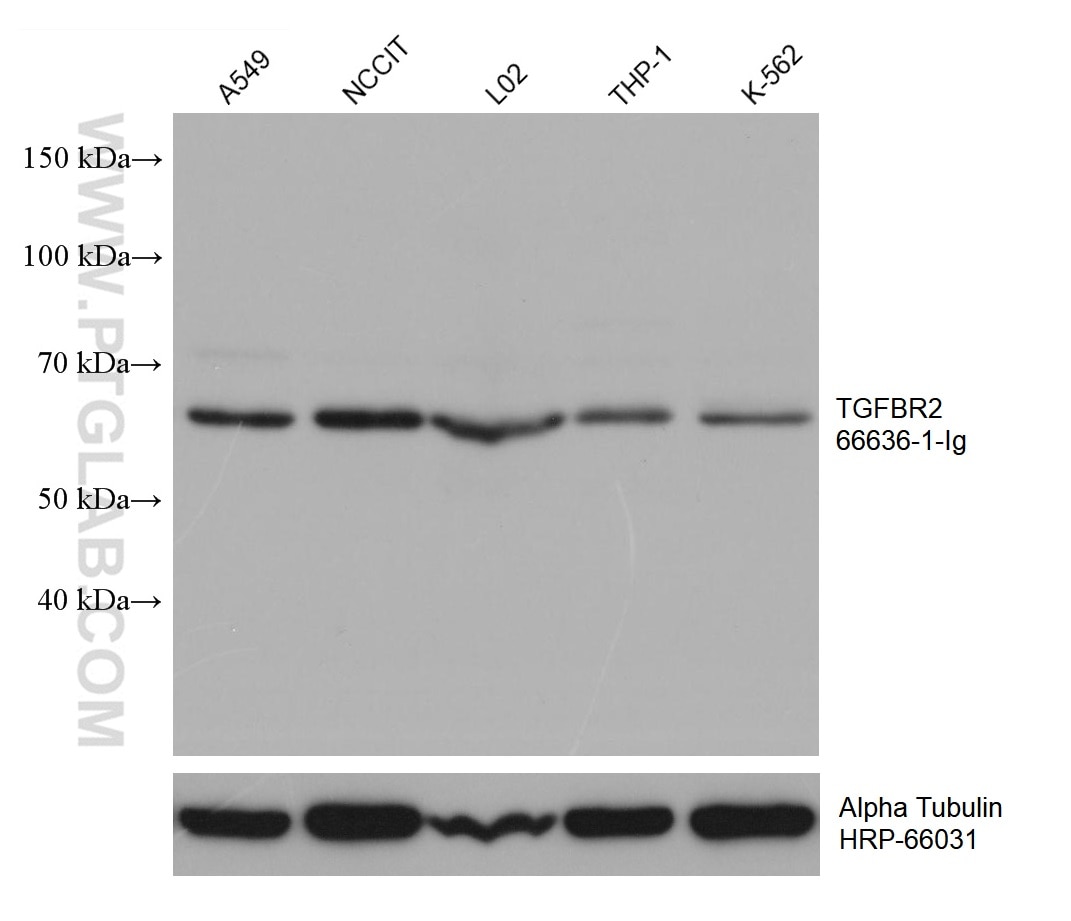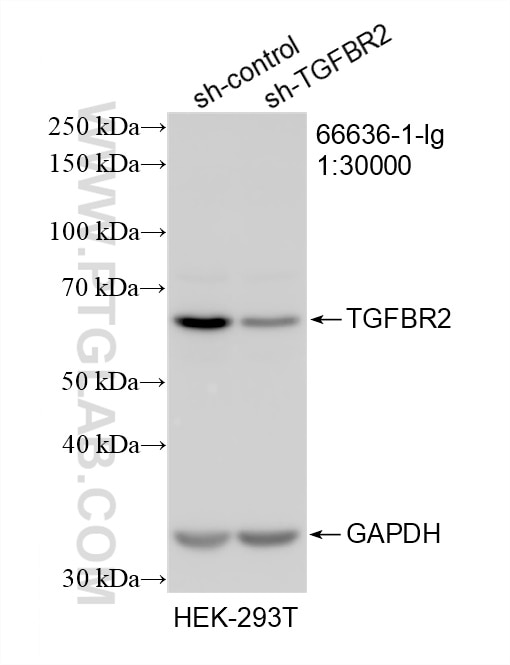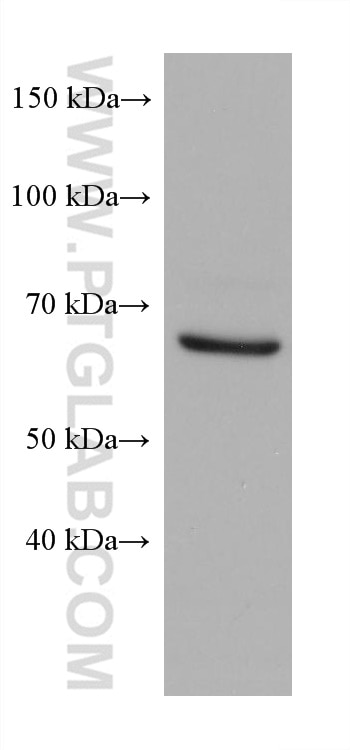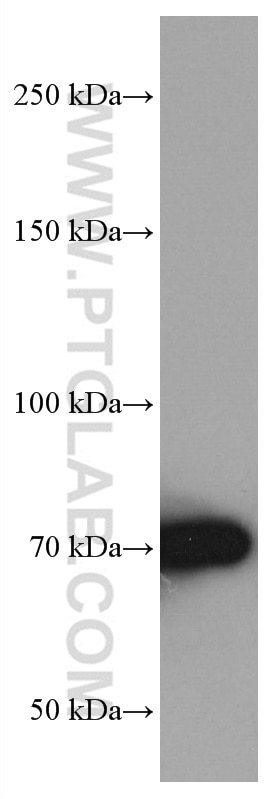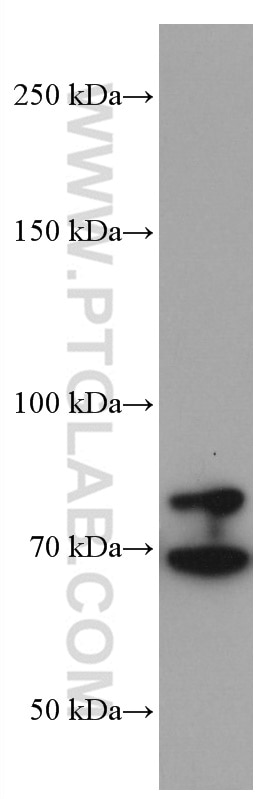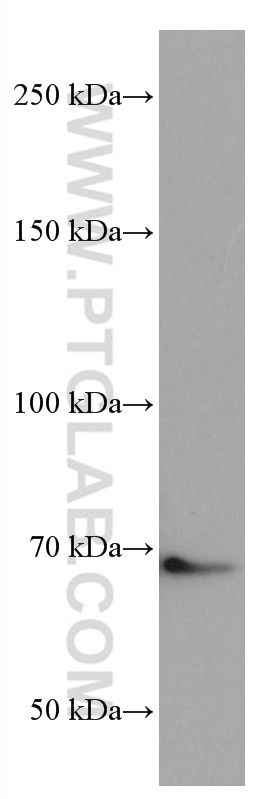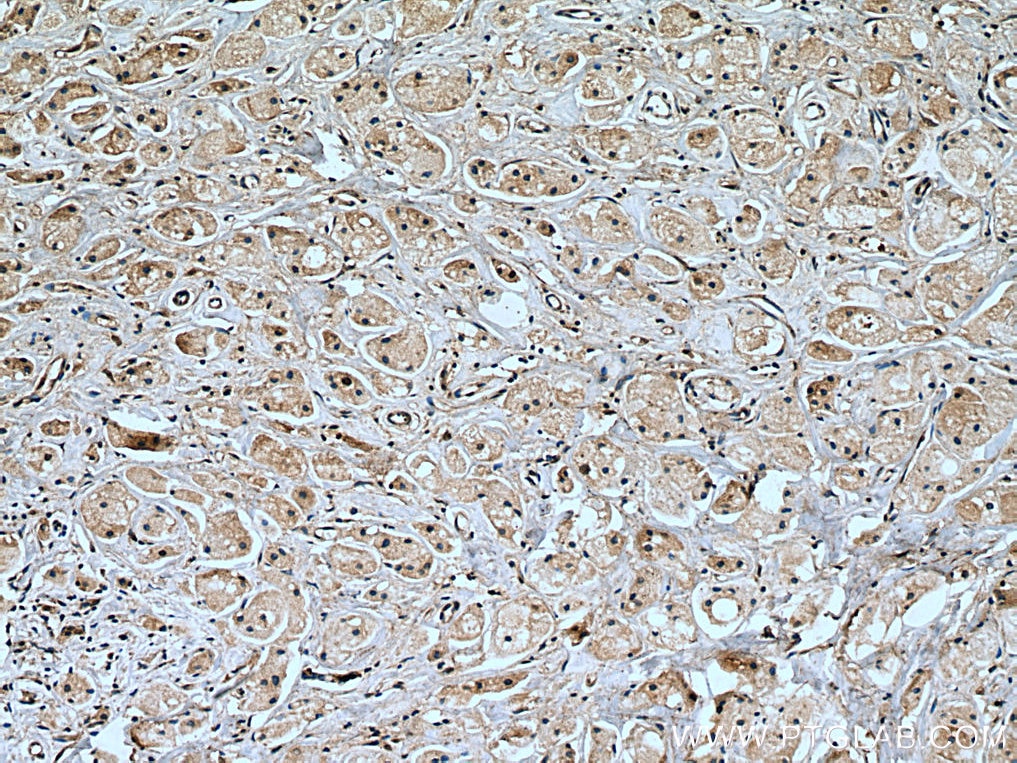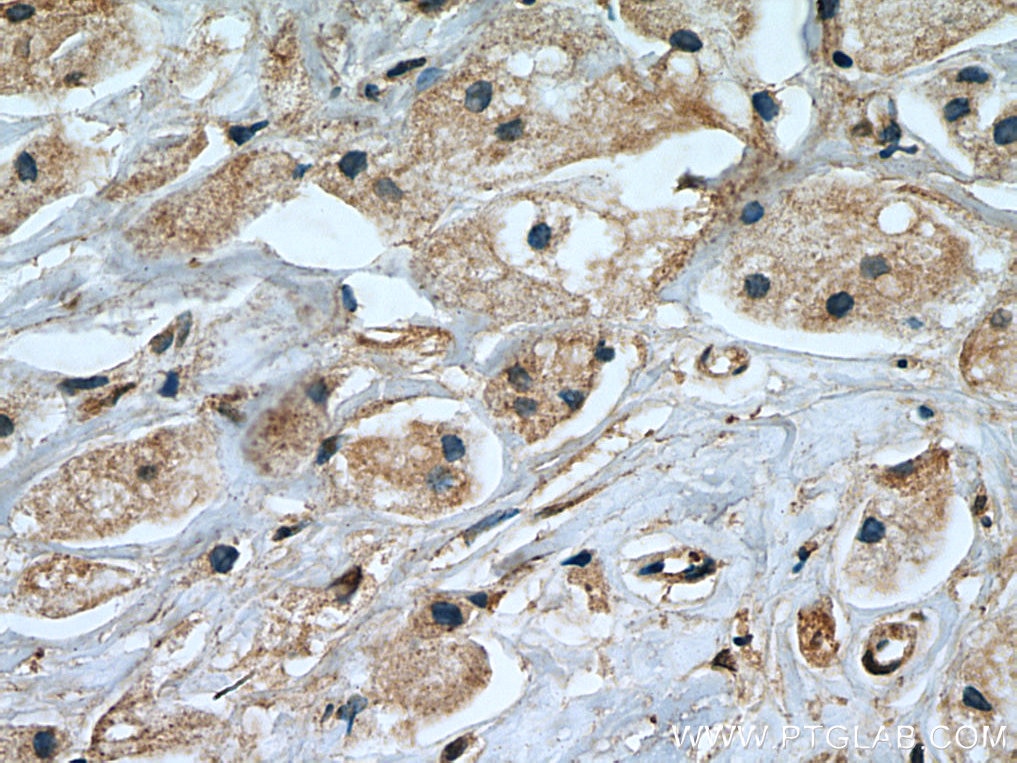- Phare
- Validé par KD/KO
Anticorps Monoclonal anti-TGFBR2
TGFBR2 Monoclonal Antibody for WB, IHC, ELISA
Hôte / Isotype
Mouse / IgG1
Réactivité testée
Humain, rat, souris et plus (1)
Applications
WB, IHC, IF, IP, CoIP, ELISA
Conjugaison
Non conjugué
CloneNo.
2D5H7
N° de cat : 66636-1-Ig
Synonymes
Galerie de données de validation
Applications testées
| Résultats positifs en WB | cellules A549, cellules HEK-293T, cellules HepG2, cellules HSC-T6, cellules K-562, cellules L02, cellules NCCIT, cellules NIH/3T3, cellules THP-1, cellules U2OS |
| Résultats positifs en IHC | tissu de cancer du sein humain, il est suggéré de démasquer l'antigène avec un tampon de TE buffer pH 9.0; (*) À défaut, 'le démasquage de l'antigène peut être 'effectué avec un tampon citrate pH 6,0. |
Dilution recommandée
| Application | Dilution |
|---|---|
| Western Blot (WB) | WB : 1:5000-1:20000 |
| Immunohistochimie (IHC) | IHC : 1:250-1:1000 |
| It is recommended that this reagent should be titrated in each testing system to obtain optimal results. | |
| Sample-dependent, check data in validation data gallery | |
Applications publiées
| KD/KO | See 3 publications below |
| WB | See 46 publications below |
| IHC | See 6 publications below |
| IF | See 8 publications below |
| IP | See 2 publications below |
| CoIP | See 3 publications below |
Informations sur le produit
66636-1-Ig cible TGFBR2 dans les applications de WB, IHC, IF, IP, CoIP, ELISA et montre une réactivité avec des échantillons Humain, rat, souris
| Réactivité | Humain, rat, souris |
| Réactivité citée | rat, Chèvre, Humain, souris |
| Hôte / Isotype | Mouse / IgG1 |
| Clonalité | Monoclonal |
| Type | Anticorps |
| Immunogène | TGFBR2 Protéine recombinante Ag25773 |
| Nom complet | transforming growth factor, beta receptor II (70/80kDa) |
| Masse moléculaire calculée | 65 kDa |
| Poids moléculaire observé | 65-80 kDa |
| Numéro d’acquisition GenBank | BC040499 |
| Symbole du gène | TGFBR2 |
| Identification du gène (NCBI) | 7048 |
| Conjugaison | Non conjugué |
| Forme | Liquide |
| Méthode de purification | Purification par protéine G |
| Tampon de stockage | PBS with 0.02% sodium azide and 50% glycerol |
| Conditions de stockage | Stocker à -20°C. Stable pendant un an après l'expédition. L'aliquotage n'est pas nécessaire pour le stockage à -20oC Les 20ul contiennent 0,1% de BSA. |
Informations générales
TGF beta Receptor II (TGFBR2) is a member of the transforming growth factor-β (TGF-β) superfamily, which are critical regulators of cell proliferation and differentiation, developmental patterning and morphogenesis, and disease pathogenesis (PMID: 10974075). TGFBR2 result in both SMAD4-dependent constraint of proliferation and SMAD4-independent activation of apoptosis (PMID: 29396446). The calculated molecular weight of TGFBR2 is 65 kDa. It has some isoforms with the molecular weight of 70-80 kDa and ~90 kDa after glycosylated.
Protocole
| Product Specific Protocols | |
|---|---|
| WB protocol for TGFBR2 antibody 66636-1-Ig | Download protocol |
| IHC protocol for TGFBR2 antibody 66636-1-Ig | Download protocol |
| Standard Protocols | |
|---|---|
| Click here to view our Standard Protocols |
Publications
| Species | Application | Title |
|---|---|---|
Cell Rep Med Engineering irradiated tumor-derived microparticles as personalized vaccines to enhance anti-tumor immunity | ||
Dev Cell DYRK1A-TGF-β signaling axis determines sensitivity to OXPHOS inhibition in hepatocellular carcinoma
| ||
Mol Ther Nucleic Acids Exploring the therapeutic potential of sγPNA-141: Pharmacodynamics and mechanistic insights during ischemic stroke recovery | ||
Acta Pharmacol Sin GPR97 deficiency ameliorates renal interstitial fibrosis in mouse hypertensive nephropathy | ||
Br J Pharmacol Inhibition of HSP90 S-nitrosylation Alleviates Cardiac Fibrosis via TGFβ/SMAD3 Signaling Pathway. |
Avis
The reviews below have been submitted by verified Proteintech customers who received an incentive for providing their feedback.
FH Kenzo (Verified Customer) (08-15-2023) | This antibody worked well for labeling TGF beta receptor type 2 in mouse kidney. We were able to acquire robust immunofluorescence signals with this KO validated antibody.
|
